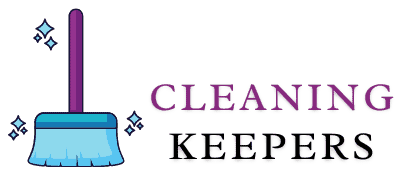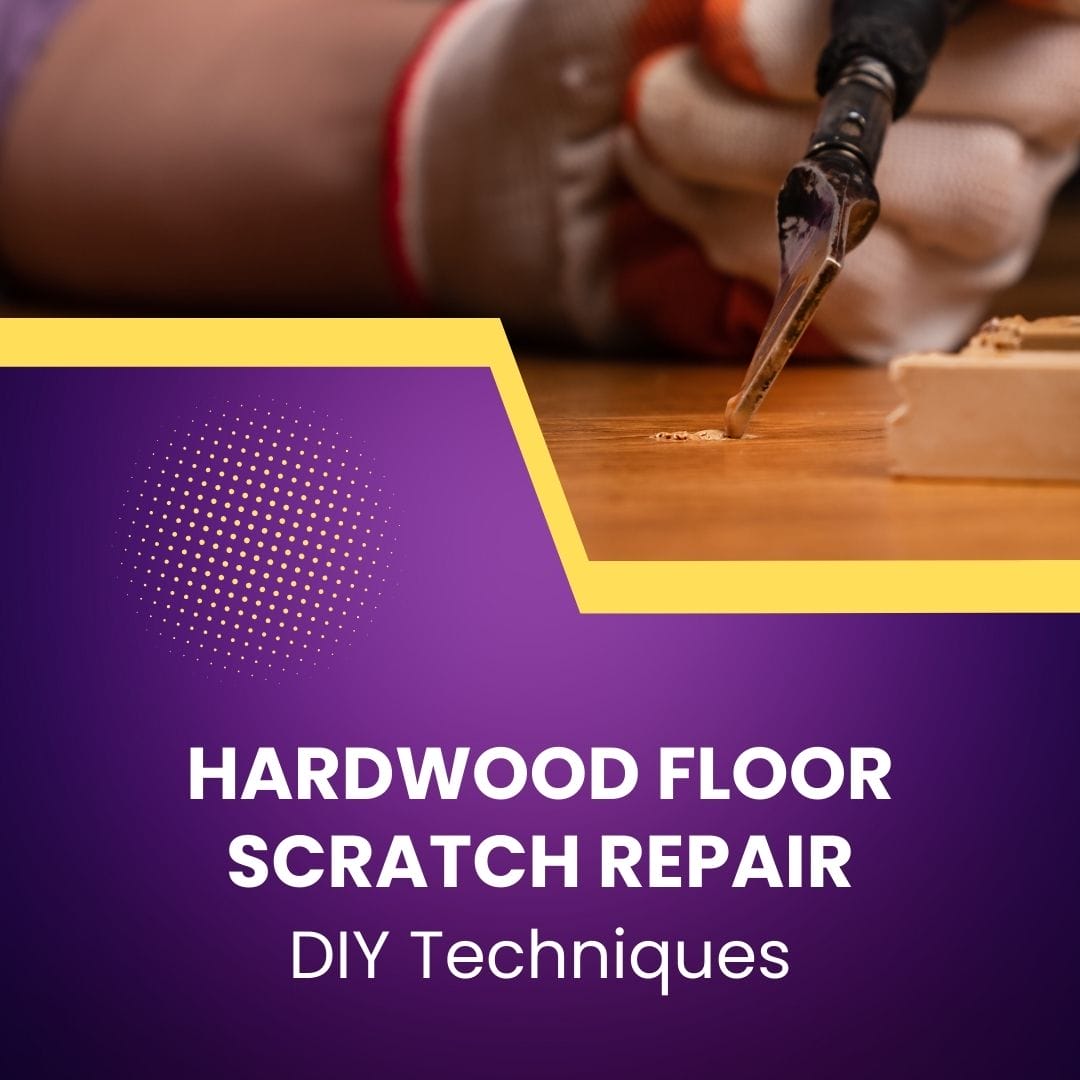Hardwood floors are durable and add character to your living space. However, they are prone to getting scratches which can be a real eyesore. Some scuffs on the hardwood floor are minor, while some are hard to ignore and cause anxiety.
Luckily, there are several ways to fix scratches on the wood floors without breaking the bank. In this article, I will explain how you can repair scratches on the hardwood floor to keep your wood floors good as new.
How Does Hardwood Flooring Get Scratches?
You must know what is scratching your hardwood floors so that you can take measures to prevent them in the future.
Hardwood floors get scratched when an abrasive surface rubs on them, much like the issues discussed in how to repair laminate flooring scratches. For example, pulling heavy furniture on the floor; the furniture’s legs, especially without furniture pads, can damage your natural wood flooring.
Pets can scrap the floors with their nails in the wood flooring panels. Moreover, dropping sharp-edged or heavy items on the hardwood floor can damage your floors.
If you’re interested in preventing such damage, consider reading about How to Install Laminate Flooring in an RV with Slide Outs
Minor Scratches
A graze or high heels can cause minor scratches. Such scratches are simple and easy to repair. A quick touch-up can make them look normal.
You can fix these scratches by filling in the color of the wood with a stain pen or a can of wood stain that matches the color of your hardwood floor.
For more detailed instructions on minor repairs, check out How to Get Dents out of Laminate Flooring
Deep Scratches
Dropping something on the floor or pulling furniture on the floor without furniture pads can cause deeper scratches. Another cause of these wood scratches is heavy machinery.
You will have to fill and finish the hardwood floor to smoothen deep scratches, making them invisible. These scratches can be fixed with melted wax that matches the color of your floor. Also, you can use a crayon if the shade works.
If the damage is to keep in the form of deep holes, you can fill it up with a repair putty. Then coat it with acetone or other finish to add a protective layer.
Learn more about managing these types of damages in How to Remove Scratches from Wood Floors
While focusing on hardwood scratches, for issues like dents in laminate flooring, find solutions here.”
How to Prepare Your Hardwood Floors for Repair?
Clean Around the Scratches
Mix a quart of water with four drops of liquid in a spray bottle and spray it on the polyurethane-finished floor. Use a dry microfiber mop to distribute the solution. Then spray it with fresh water and buff it with a dry cloth.
For comprehensive tips on cleaning and maintaining laminate floors, including best practices, check out here.
Sand the Scratches
Sanding with fine-grained sandpaper can bring back life to wood floors and buff out damage. Ensure you sand in the grain direction and reapply the stain that has been buffed away from sanding. With sanding, you can restore your floor’s look with a little elbow grease.
For addressing structural issues like buckling in laminate floors, explore our guide here.
Patch Test
Choose a hidden area under a closet or bed to patch-test to see if the wood stain matches your floor color.
Urethane
Once you have found the right stain, patch test a urethane finish. There are water-based urethanes and oil-based urethanes.
A water-based urethane dries quickly, imparting a shiny and clear finish for newly installed floors. However, it can create too much contrast on the old, darkened floors.
Oil-based urethanes dry with a yellow tinge that darkens over time which may suit the color of an old floor. And they have a strong smell.
Learn how to clean old wood floors without refinishing here.
Ensure you thoroughly clean and sand the area smooth before you stain and finish.
Learn whether steam cleaning is suitable for hardwood flooring here.
How to Repair Scratches on Hardwood Floor?
Wax Pencils/Markers
Wax pencils and markers work great for fixing minor scuffs. They are easy to use and easily available from your local hardware store. You can hide minor scratches even if you have no experience with them.
Make sure you choose the right color that matches the color of your hardwood floor to completely hide the patchwork.
Explore more floor care methods in How to Fix Peeling Laminate Floor
How to use a wax pencil?
Stroke the pencil in the opposite direction to the scratch. Rub it back and forth, and then wipe it with a dry cloth to blend in the buff.
Stain Pen
It is another easy way to fix scratches on hardwood floors. They are easy to use and are available in a variety of colors.
For additional floor care techniques, take a look at Laminate Flooring in Basement: Pros and Cons
How to use it for floor scratch repair?
Rub the stain pen on the scratches to make them unnoticeable. Then apply a layer of varnish to blend it with the rest of the floor. Wait for it to dry, then wipe it with a clean cloth.
For more general guidance on repairing laminate floors, visit here.
Learn about creating a stagger pattern for laying laminate flooring here.
Repair Putty
Repair colored putty is one of the best options to repair deeper scratches. The clay-like structure of the putty can fill in the major scratches working as a wood filler.
Repair putty is available in different colors to find the color that matches your hardwood flooring.
Read about similar solutions in How to Make a Stagger Pattern for Laying Laminate Flooring
How to use repair putty?
Take out some colored putty using a plastic putty knife from the container. Apply putty on the scratch to fill it. Remove the excess putty with a wipe and blend the patch with flooring. Flatten the putty, paint it with the matching color to your wood floor, and let it dry.
For a detailed laminate floor repair guide, check out here.
Johnson’s Paste Wax
Paste wax is ideal for repairing dents and scratches on hardwood flooring, but you can also use it for hiding scratches on hardwood flooring.
You might also be interested in Best Vinyl Siding Cleaner for Pressure Washer for other cleaning solutions
How to use wax for floor scratch repair?
Paste wax is available in different colors. Fixing a scratch on a wood floor with paste wax is as simple as finding the right color and applying it to the scratched area. Then flatten it and remove excess wax using a plastic putty knife. Let it dry and, if needed, apply a finisher to it.
Crayon
Fixing scratches on the wood floor with crayons is easy and cost-effective.
How to use crayons to fix scratches?
Melt crayons and fill the scratches with them. Use the colors of crayons that match the color of the hardwood floor to ensure your floor has a natural/normal look. If you don’t find matching crayons, you can mix up different crayon colors to achieve the color of your hardwood floor.
Once the crayons have dried, gently scrape extra crayons with a putty knife. Use the at 45 degrees from the floor so that you do not damage the floor accidently.
Olive Oil
You can blend the scratch with the rest of the floor to make it less noticeable with olive oil.
How to use it to fix scratches?
Dip a piece of cotton in olive oil and rub it on the scratch marks to make them less noticeable. It makes the scrapes lighter in color and blends them into the floor.
For more detailed to fix peeling in laminate flooring, refer to our guide here.
For guidance on repairing laminate flooring scratches, check out our article here.
Walnut
Rubbing walnuts on scratches on the hardwood floors hides.
How to use walnuts to fix scratches?
Rub a walnut on the scratches for 3 to 5 minutes to hide them on the floor. You will have to rub the walnut back and forth toward the scratch. Rubbing it across the scratch will make the scratch even worse.
Repair Kits and Wax Sticks
A hardwood floor scratch repair kit is perfect for repairing your hardwood floor. Repair kits come with wood filler of different colors, battery-powered melting tools, markers, cleaning solutions, towels, and knives.
Here is how you can repair your hardwood floors with wood filler:
- Remove the splinters in scratches and the surrounding floor with a putty knife. Keep the knife at 45 degrees to prevent further damage to the floor.
- Melt a stick with the battery-powered melting tool that comes with the kit. You can combine different colors to match the color of the floor.
- Melt lighter shades first and then add darker ones later to rectify if the color does not match the floor color.
- Adding white wood filler will make the shade lighter. To make the shade darker, add darker melted sticks.
- Let it dry.
- Sand it with fine-grained sandpaper to make it leveled.
- Wipe the area clean with a dry cloth.
- If your hardwood floor scratch repair kit has a clear lacquer or varnish, Apply a protective layer with a clear lacquer or varnish.
- Get proper ventilation in the area when you are using a finish.
How to Maintain Your Wood Floor Finish?
The floor’s finish protects the floor from usual surface wear and tear. You have to identify the type of finish to maintain it. For example, if your wood floor is older than 1970, it is probably finished with shellac or varnish. You can add shine to these types of finishes with liquid or wax, or oil.
Explore our effective floor cleaning guide here.
If your varnish or shellac finish has noticeable scratches, you can strip or sand it down and refinish it with a polyurethane-based product. Finishes that contain polyurethane are highly durable, easy to clean, and resistant to everyday wear and tear. You can clean this finish with only a water-based silicone polish.
Discover tips for maximizing space and cleanliness in studio apartments here
You can use the above methods to remove or minimize the less serious discoloration and scratches to restore your hardwood floors. When wear and tear become too noticeable and spread over the entire floor, it might be the time for total refinishing. You can refinish floors yourself when you have to, but it’s best left for the professional.
To learn about unique flooring considerations, like laying laminate over tile, see our article here.
Discover tips for maximizing space and cleanliness in studio apartments here
How to Prevent Scratches on Your Hardwood Flooring?
You can prevent scratches on the wood floors by taking several precautionary measures.
Furniture Pads
Furniture pads provide padding between the floor and the furniture, which helps prevent damage to the floor. With furniture pads installed, you can move your furniture without damaging the floor.
For advice on removing carpet pad stains from hardwood floors, see our article here.
Rugs
Floor rugs are helpful on all kinds of floors. It protects your hardwood flooring from damage, especially in high-traffic areas.
Trim Pet Nails
Cats’ and dogs’ nails can damage hardwood floors. They like to dig their nails in the hardwood, which causes scratches on the floor. Consider trimming their nails regularly to keep them from scratching your floor.
Limit Excess Moisture
Moisture can cause the wood floor to expand and swell. Limit the moisture in the area and ensure water doesn’t stay on the floor for too long. You can invest in a dehumidifier to control the humidity levels in the surroundings.
Heavy Machinery
Try not to bring heavy machinery inside when you have installed wood floors. If you have to, make sure you use padding underneath them to prevent any damage to the floor.
For additional information on removing scratches from wood floors, visit here.
Regular Cleaning and Maintenance
Lack of shine can make the scratches and worn-out areas look worse. Also, dirt particles can be ground into hardwood floors that can scratch your hardwood floors. Mopping and sweeping the floor regularly will remove the debris and dust that can scratch the floor.
For a guide on repairing chipped laminate flooring, visit here.
Do not use abrasive brooms or scrub pads. Also, avoid soaking the floor with liquid cleaner or water. Instead, use a vacuum or soft mop to remove dust and debris.
Regular cleaning is essential to maintain the floor’s appearance and prevent scratches. Learn how to clean laminate floors without causing damage here.
For more comprehensive tips on hard surface cleaning and maintenance, including hardwood floors, visit here.
For information on repairing dents in hardwood floors, explore here.
Anti-Scratch Laminate Pads
Anti-scratch laminate pads help keep your floor scratch-free. They are affordable and are pretty scrape-resistant. They make your floor immune to further scratches.


